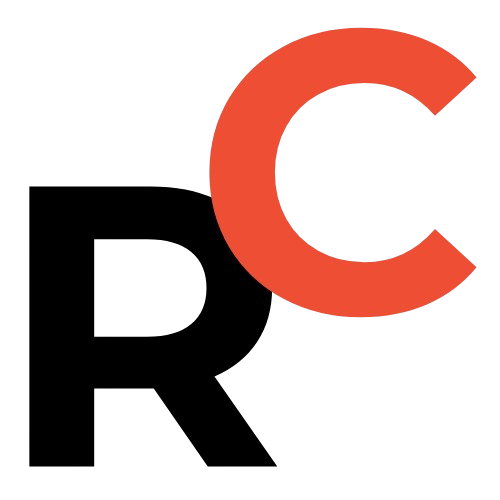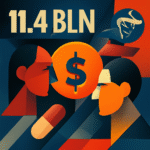Key Points
- Top producers ordered to lead cuts: Regulators told firms including Muyuan (Mùyuán 牧原股份), Wens (Wēnshì 温氏股份) and Shuangbaotai (Shuāngbāotāi 双胞胎) to implement concrete targets — reduce productive breeding sows (能繁母猪), lower 出栏量 and control 出栏体重约120公斤, with year‑on‑year reductions in 2026.
- Policy backed by economic levers: The capacity‑control package pairs administrative targets with fiscal and financial measures — notably tighter credit limits and potential subsidy reductions to discourage expansion.
- Market reaction — prices at a low: National hog prices hit a one‑year low on Sept 18 at ¥12.93 RMB/kg ($1.77 USD/kg), a level already below cash feed‑and‑care cost reported by some listed producers, implying near‑term margin pressure.
- What to watch: Monitor company disclosures on productive‑sow inventory changes and planned culls from major names above, and policy signals from the NDRC (国家发展和改革委员会) on credit and enforcement timing.
- Target: Reduce productive breeding sows (能繁母猪)
- Target: Lower total slaughter numbers (出栏量)
- Target: Control slaughter weight for market hogs at approximately 120 kilograms (出栏体重约120公斤)
- Timeline: Implement year-on-year reductions in breeding sow inventories for 2026

Pig production curbs are now official policy drivers after a high‑level meeting on capacity control that surprised the market.
Quick snapshot
The Livestock and Veterinary Bureau of the Ministry of Agriculture and Rural Affairs (Mínɡyè Nónɡcūn Bù 农业农村部) and the National Development and Reform Commission (Guójiā Fāzhǎn Hé Gǎigé Wěiyuánhuì 国家发展和改革委员会) met with top hog producers on September 16, 2025.
Regulators explicitly told leading listed firms to lead reductions in output.
Attending companies included Muyuan (Mùyuán 牧原股份), Wens (Wēnshì 温氏股份) and Shuangbaotai (Shuāngbāotāi 双胞胎).

Resume Captain
Your AI Career Toolkit:
- AI Resume Optimization
- Custom Cover Letters
- LinkedIn Profile Boost
- Interview Question Prep
- Salary Negotiation Agent

What regulators asked of top producers — clear, operational targets
- Reduce the number of productive breeding sows (能繁母猪).
- Lower total slaughter numbers (出栏量).
- Control slaughter weight for market hogs at about 120 kilograms (出栏体重约120公斤).
- Implement year‑on‑year reductions in breeding sow inventories for 2026.
One company representative confirmed that top producers were given concrete targets, including required reductions in productive‑sow inventories in 2026 versus 2025.
Industry veterans told reporters this was the first time the NDRC explicitly required a reduction in breeding‑sow stock, and that the policy package goes further than the market expected.

Policy tools: fiscal and financial levers to enforce capacity control
The capacity‑control program will be backed by fiscal and financial measures aimed at limiting expansion.
Policymakers signaled stricter limits on credit used to expand pig capacity.
They also signaled reductions or removals of subsidies that previously encouraged capacity growth.
Put plainly, the policy stack pairs administrative targets with economic incentives to discourage adding new capacity.

Find Top Talent on China's Leading Networks
- Post Across China's Job Sites from $299 / role, or
- Hire Our Recruiting Pros from $799 / role
- Qualified Candidate Bundles
- Lower Hiring Costs by 80%+
- Expert Team Since 2014
Your First Job Post

Market reaction — hog prices at a one‑year low
Market monitoring shows hog prices fell steadily through Q3 of 2025.
On September 18 the national price for three‑way crossbred live hogs (外三元生猪) hit ¥12.93 RMB/kg ($1.77 USD/kg), a one‑year low.
That price level is already below the cash feed‑and‑care cost reported by some listed hog producers.
Regulators had earlier urged strict implementation of measures including reasonably culling productive breeding sows, appropriately reducing sow inventories, minimizing secondary fattening (二次育肥), controlling slaughter weights, and strictly preventing new capacity additions.

ExpatInvest China
Grow Your RMB in China:
- Invest Your RMB Locally
- Buy & Sell Online in CN¥
- No Lock-In Periods
- English Service & Data
- Start with Only ¥1,000

What this means for supply, margins, and market timing
Administrative constraints plus tighter financing should produce a measurable drop in capacity over time if firms comply.
The speed and magnitude of any price recovery will depend on two things.
First, how rigorously the largest producers comply with the reduction targets.
Second, how long policy measures remain enforced and how widely they are applied across the sector.
Investor and founder takeaways
Large listed producers may face near‑term margin pressure if prices remain below cash costs.
Compliance by the sector’s largest firms will be the primary determinant of when supply tightens enough to support higher prices.
Watch for public disclosures from big names like Muyuan (Mùyuán 牧原股份), Wens (Wēnshì 温氏股份) and Shuangbaotai (Shuāngbāotāi 双胞胎) on productive‑sow inventory changes and planned culls.
Also watch policy signals from the National Development and Reform Commission (NDRC) for implementation details and credit restrictions.
Investors should factor in the added policy risk to capacity expansion plans and any financed greenfield projects in the livestock sector.
- Company Disclosures: Monitor concrete numbers on productive-sow inventory reductions from major producers.
- Hog Price Tracking: Compare hog price movements against reported cash costs from listed producers.
- Debt & Capex Review: Assess major producers’ debt and capital expenditure plans to gauge credit tightening impact.
- Policy Updates: Follow NDRC and Ministry of Agriculture and Rural Affairs for enforcement signals.

Practical actions for market participants
- Monitor company disclosures for concrete numbers on productive‑sow inventory reductions.
- Track hog price movements against reported cash costs from listed producers.
- Review debt and capex plans for major producers to assess whether credit tightening will slow expansion.
- Follow policy updates from the NDRC (国家发展和改革委员会) and the Ministry of Agriculture and Rural Affairs (农业农村部) for enforcement signals.

Why this story matters for global agribusiness watchers
China is the world’s largest pork market, so material changes in capacity and policy ripple through global feed and protein markets.
Top‑down directives that force leading firms to cut production create an unusual mix of administrative and market interventions.
That mix changes the risk profile for producers, input suppliers, and investors betting on a cyclical rebound in hog prices.

How to follow updates and primary sources
Check regulatory statements from the National Development and Reform Commission (Guójiā Fāzhǎn Hé Gǎigé Wěiyuánhuì 国家发展和改革委员会) for credit and fiscal guidance.
Track coverage from market media like the Shanghai Securities News and Eastmoney for company reaction and industry commentary.
Primary reporting and company notices will be the best signals of compliance and timing for capacity reductions.
Keep an eye on these signals to understand when policy‑driven supply cuts start to tighten the market and affect margins — Pig production curbs.



